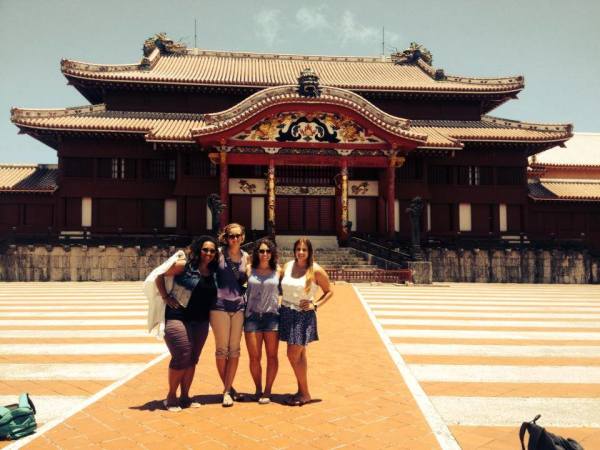Tales from Abroad is an ongoing section in which Gustavus students share the highlights of their study abroad experiences.
This summer I had the opportunity to work on an American Military base in Okinawa, Japan. Okinawa is a small island off the southern coast of Japan, which has a distinct history and culture of its own. In fact, one of the first things I learned while there was how adamant some people were about being referred to as Okinawan and not Japanese. This was in part because Japan historically oppressed Okinawans and in part because the Ryukyuan culture is very different than that of mainland Japan.
I quickly grew to appreciate and admire the culture. The moment I stepped foot onto the plane for Naha, I knew I was going to love the people of Okinawa. The flight attendants were all smiles and greeted us with the customary bows. My luggage was lifted delicately onto the conveyer belt and the security officers were patient and kind to me. What a contrast to the harsh, intimidating pat down I have received at every airport in the United States.
This level of respect was reflected in every interaction I had throughout the summer. Every taxi driver reminded me to check my seat before leaving, and one even called my apartment building to inform me that I had left my wallet and that they were leaving it at the Military Police Station on base for me. On public buses there were rules against eating food, talking on your cell phone, and even talking in general was frowned upon to enable riders to have a peaceful journey.
Even the protesters in Okinawa were respectful. Everyday I drove off base to the sight of Okinawan’s with “No Osprey” signs and requests for us to leave. But when passing, I received polite nods and small smiles. They even refrained from protesting on July, 4, a kindness not unnoticed.
I also had the opportunity to witness several unique Okinawan festivals and ceremonies. I watched families prepare and celebrate Obon. This included the 10,000 Eisa Dance parade, where 10,000 people dressed in traditional clothing danced and played drums down the mainstreet of Naha. I watched a woman perform Ryukyuan dancing at Shuri Castle. After she offered me a free lesson on the Sanshin, a three-stringed banjo of sorts, followed by brief dance and singing instruction. And these are just a couple of examples.
Overall, my favorite thing was getting lost in town and interacting with the Okinawan people. Listening to their stories, and learning about their culture is something I could never get enough of or fully express my admiration for. RUNOKI.
-Ana Hollander
